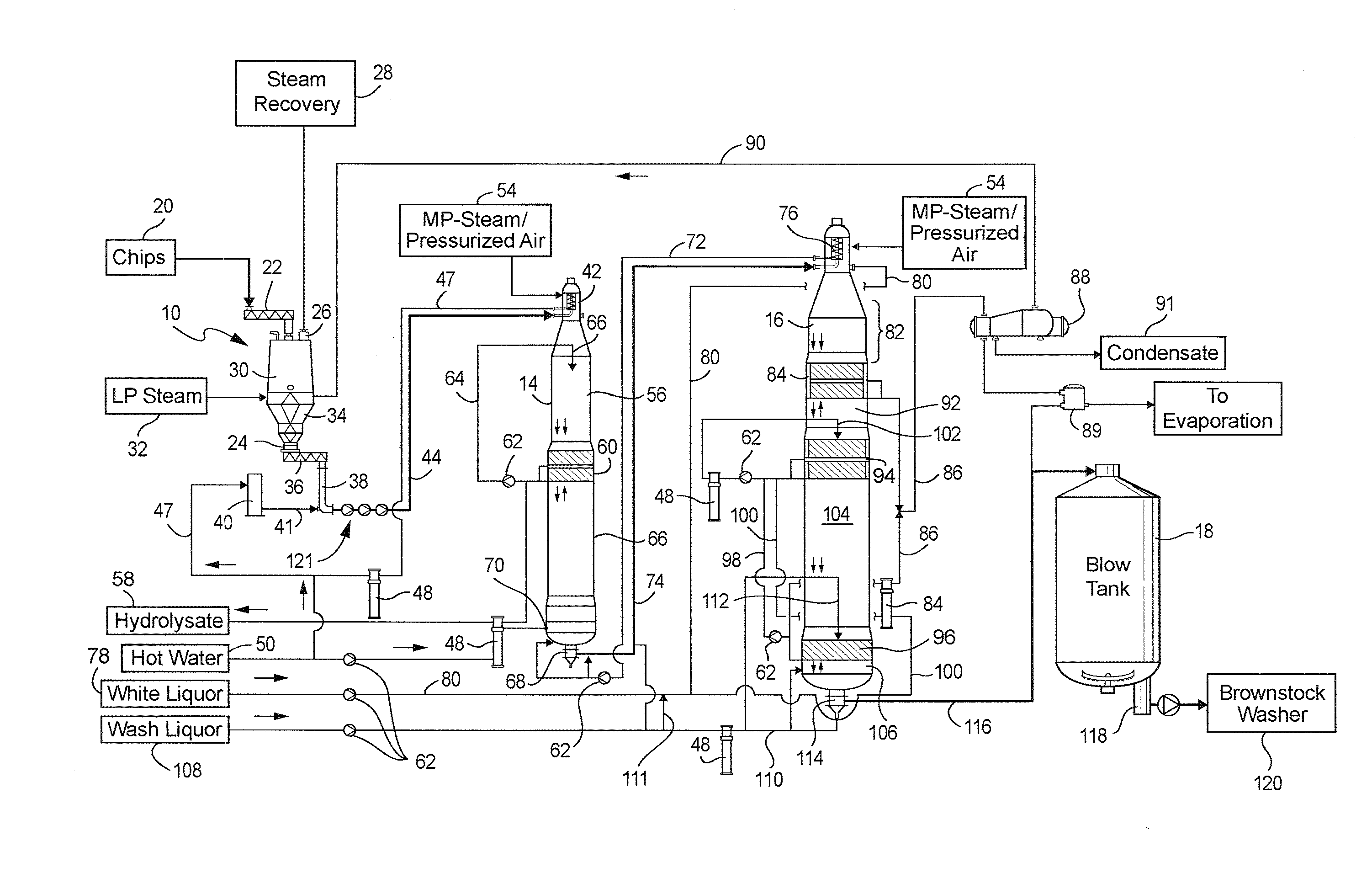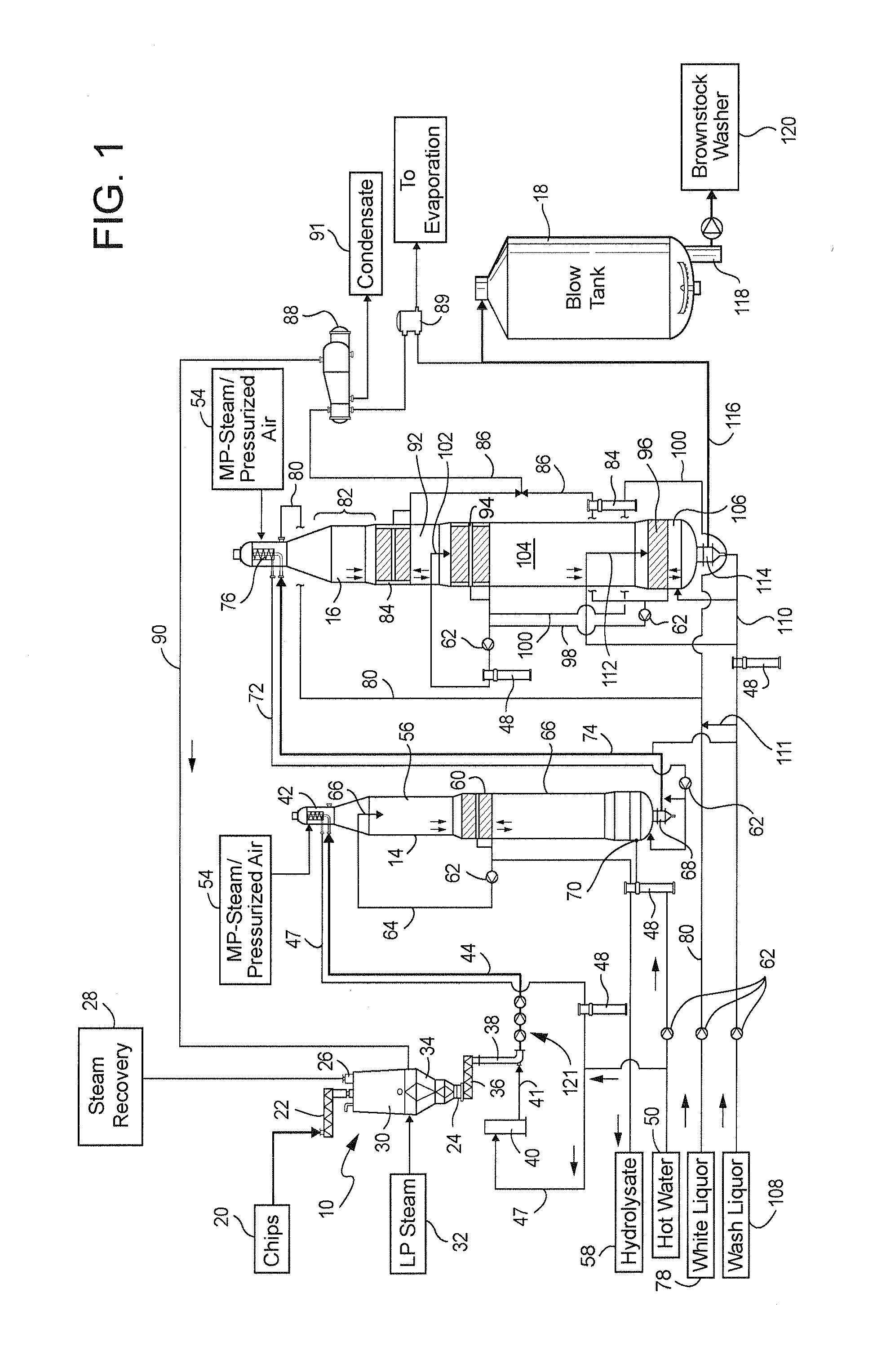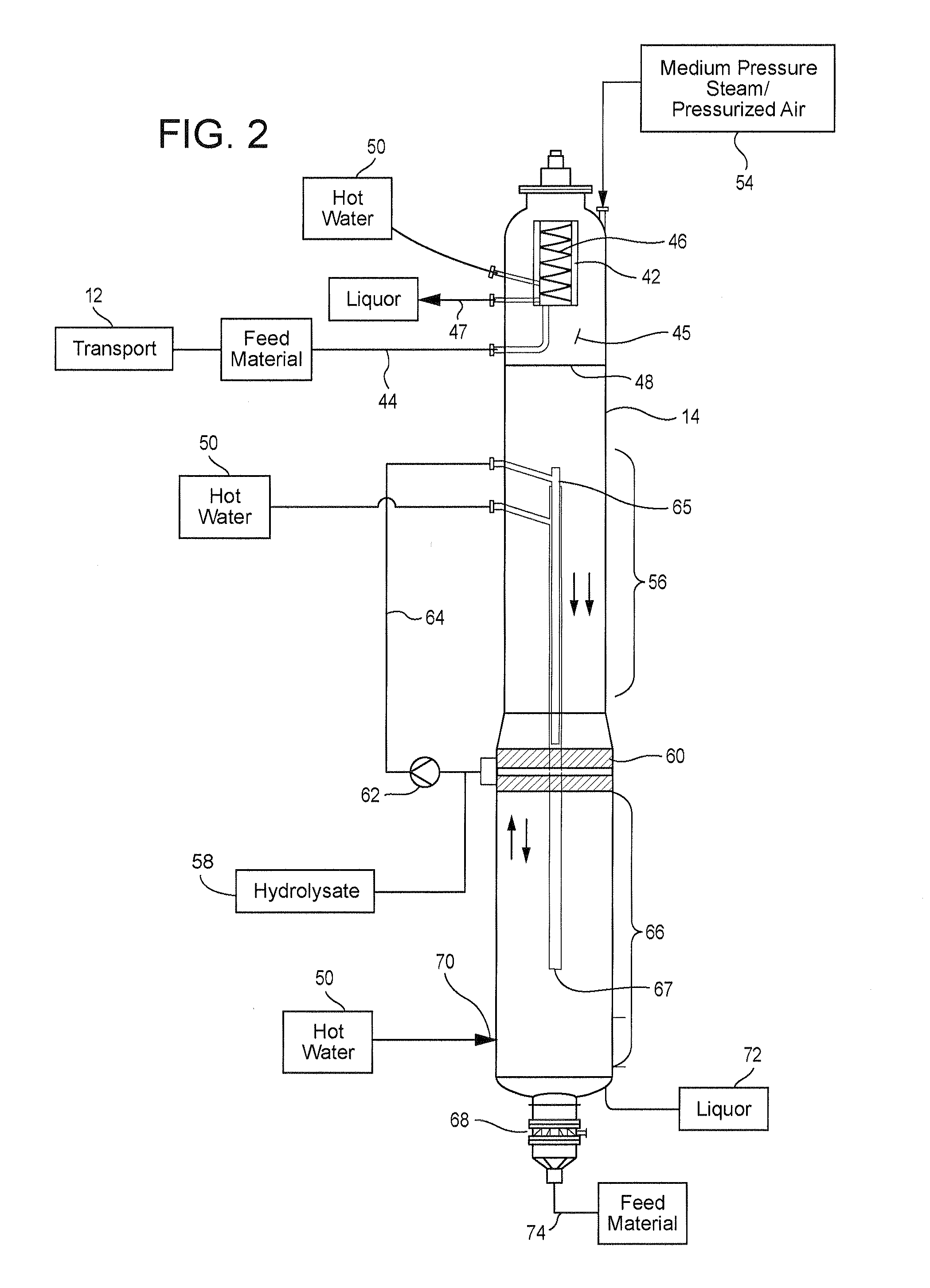Method and apparatus to produce pulp using pre-hydrolysis and kraft cooking
a technology of pre-hydrolysis and kraft cooking, which is applied in the direction of continuous pulping process, pulping with inorganic bases, papermaking, etc., can solve the problems of interference with equipment operation, interference with the rotation of moving parts, etc., and achieve the effect of enhancing the flow of feed material and reducing the buildup of pseudolignins
- Summary
- Abstract
- Description
- Claims
- Application Information
AI Technical Summary
Benefits of technology
Problems solved by technology
Method used
Image
Examples
Embodiment Construction
[0026]FIG. 1 is a process flow diagram of a system for dissolving pulp using pre-hydrolysis and Kraft cooking. The system includes a steaming chip bin 10, a high pressure transport device 12, a pressurized pre-hydrolysis reactor vessel 14, a pressurized Kraft cooking reactor vessel 16 and a blow tank 18. The cellulosic feed material may flow continuously through the system. The amount of feed material flowing through the system depends on the size of the system, and this amount may be in excess of 500 to 3,500 tons per day. The system may be used to dissolve pulp for the production of, for example, rayon, plastics and biofuels, such as ethanol.
[0027]Cellulosic feed material 20 is fed by a chip feeder 22 to an upper inlet of the chip bin 10. The cellulosic feed material may be wood chips, biomass, comminuted lignocellulosic material and other organic fibrous material. The chip feeder 22 may be screw conveyor or tube that provides an air lock to seal the interior chamber of the chip b...
PUM
| Property | Measurement | Unit |
|---|---|---|
| temperature | aaaaa | aaaaa |
| temperature | aaaaa | aaaaa |
| pH | aaaaa | aaaaa |
Abstract
Description
Claims
Application Information
 Login to View More
Login to View More - R&D
- Intellectual Property
- Life Sciences
- Materials
- Tech Scout
- Unparalleled Data Quality
- Higher Quality Content
- 60% Fewer Hallucinations
Browse by: Latest US Patents, China's latest patents, Technical Efficacy Thesaurus, Application Domain, Technology Topic, Popular Technical Reports.
© 2025 PatSnap. All rights reserved.Legal|Privacy policy|Modern Slavery Act Transparency Statement|Sitemap|About US| Contact US: help@patsnap.com



